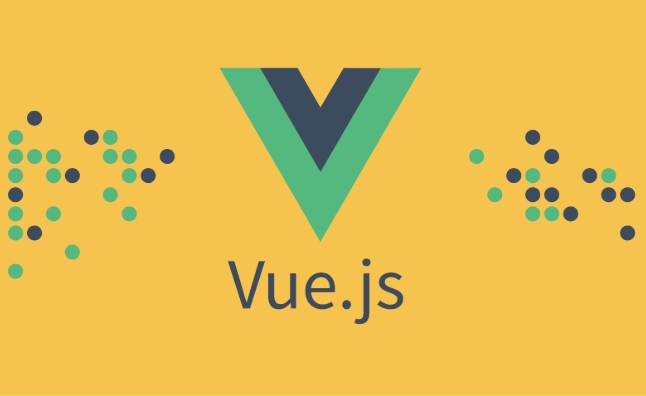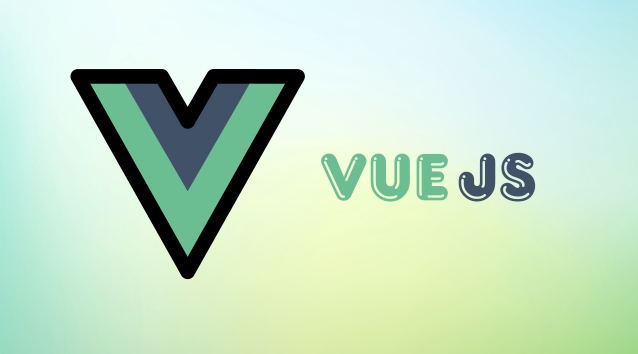 Web Front-end
Web Front-end
 Vue.js
Vue.js
 How would you integrate a third-party library like D3.js or Chart.js into a Vue component?
How would you integrate a third-party library like D3.js or Chart.js into a Vue component?
How would you integrate a third-party library like D3.js or Chart.js into a Vue component?
Jul 23, 2025 am 01:55 AMIntegrating D3.js or Chart.js in Vue components requires attention to life cycle and responsive system. The specific steps are as follows: 1. Initialization should be performed in the mounted() hook to ensure that the DOM has been rendered; 2. For responsive data changes, use watch to listen and update the chart; 3. Use ref to refer to DOM elements to avoid manual queries; 4. Before the component is destroyed, clean up resources in beforeUnmount(), such as removing event listening, canceling timers, and destroying chart instances to prevent memory leakage.

Sure, integrating a third-party library like D3.js or Chart.js into a Vue component isn't complicated, but you do need to be mindful of Vue's lifecycle and reactivity system. Here's how I usually go about it.

When to Initialize the Library
The key thing is timing — you don't want to try manipulating the DOM before Vue has rendered it. So for most cases, the right place to initialize your chart or visualization is in the mounted() lifecycle hook.
This makes sense because by the time mounted() runs, the component's template has been rendered into the DOM, and any elements you want to attach your chart to (like a <canvas></canvas> or an SVG container) will exist.

If your data is reactive and might change later, you'll also want to watch for changes and possibly update or re-render the chart inside a watch block.
Using Chart.js in a Vue Component
Chart.js is pretty straightforward to integrate. Here's a quick rundown:

-
Install it:
npm install chart.js
Import and use it in your component:
import { Chart } from 'chart.js'; export default { name: 'BarChart', props: ['data'], mounted() { const ctx = document.getElementById('myChart'); new Chart(ctx, { type: 'bar', data: this.data, options: {} }); } }In your template:
<canvas id="myChart"></canvas>
If the data prop changes over time, set up a watcher to update the chart accordingly:
watch: {
data(newData) {
// You'd ideally store the chart instance and call .update()
}
} Just remember to clean up when the component is destroyed — call .destroy() on the chart instance inside beforeUnmount() .
Handling D3.js in Vue
D3 works a bit differently since it directly manipulates the DOM. Vue doesn't mind that, but you have to be careful not to conflict with Vue's own DOM updates.
Here's what I typically do:
- Use the
mounted()hook again to create the visualization. - Store the D3 selection so you can reference or update it later.
- If needed, use watchers to respond to data changes and update the visualization accordingly.
For example:
import * as d3 from 'd3';
export default {
name: 'BarGraph',
props: ['data'],
mounted() {
this.drawChart();
},
methods: {
drawChart() {
const svg = d3.select(this.$refs.chart)
.append('svg')
.attr('width', 500)
.attr('height', 300);
// Draw bars here using this.data
}
},
watch: {
data() {
// Clear previous drawing
d3.select(this.$refs.chart).selectAll('*').remove();
this.drawChart();
}
}
}In the template:
<template> <div ref="chart"></div> </template>
Using a ref gives you a direct handle to the DOM element without needing to query it manually. That's cleaner and safer in Vue.
Cleanup Is Important
One thing people often forget is cleaning up after themselves. If your third-party library creates event listeners, timesers, or holds references to DOM nodes, those can leak memory if not properly removed.
So always make sure to:
- Remove event listeners.
- Cancel animation frames or timeouts.
- Destroy chart instances if the library provides a method for that.
Do all of this inside the beforeUnmount() lifecycle hook.
That's basically it. It's not overly complex, but it does require understanding Vue's lifecycle and how external libraries interact with the DOM and your data.
The above is the detailed content of How would you integrate a third-party library like D3.js or Chart.js into a Vue component?. For more information, please follow other related articles on the PHP Chinese website!

Hot AI Tools

Undress AI Tool
Undress images for free

Undresser.AI Undress
AI-powered app for creating realistic nude photos

AI Clothes Remover
Online AI tool for removing clothes from photos.

Clothoff.io
AI clothes remover

Video Face Swap
Swap faces in any video effortlessly with our completely free AI face swap tool!

Hot Article

Hot Tools

Notepad++7.3.1
Easy-to-use and free code editor

SublimeText3 Chinese version
Chinese version, very easy to use

Zend Studio 13.0.1
Powerful PHP integrated development environment

Dreamweaver CS6
Visual web development tools

SublimeText3 Mac version
God-level code editing software (SublimeText3)
 What is headless UI in Vue?
Jul 08, 2025 am 01:38 AM
What is headless UI in Vue?
Jul 08, 2025 am 01:38 AM
HeadlessUIinVue refers to a library of UI components that provide no preset styles and only contains core logic and behavior. Its features include: 1. No style restrictions, developers can customize the design; 2. Focus on barrier-free and interactive logic, such as keyboard navigation, state management, etc.; 3. Support Vue framework integration, exposing the control interface through combinable functions or components. Reasons for use include: maintaining design consistency, built-in accessibility, strong component reusability, and lightweight library size. In practical applications, developers need to write HTML and CSS themselves. For example, when building a drop-down menu, the library handles state and interaction, while developers decide on visual presentation. Mainstream libraries include HeadlessUI and RadixVue for TailwindLabs, suitable for
 How to watch nested properties in Vue 3?
Jul 07, 2025 am 12:51 AM
How to watch nested properties in Vue 3?
Jul 07, 2025 am 12:51 AM
In Vue3, there are three ways to monitor nested properties using the watch function: 1. Use the getter function to accurately monitor specific nested paths, such as watch(()=>someObject.nested.property,callback); 2. Add the {deep:true} option to deeply monitor changes within the entire object, which is suitable for situations where the structure is complex and does not care about which property changes; 3. Return an array in the getter to listen to multiple nested values ??at the same time, which can be used in combination with deep:true; in addition, if ref is used, the nested properties in its .value need to be tracked through getter.
 How to build a component library with Vue?
Jul 10, 2025 pm 12:14 PM
How to build a component library with Vue?
Jul 10, 2025 pm 12:14 PM
Building a Vue component library requires designing the structure around the business scenario and following the complete process of development, testing and release. 1. The structural design should be classified according to functional modules, including basic components, layout components and business components; 2. Use SCSS or CSS variables to unify the theme and style; 3. Unify the naming specifications and introduce ESLint and Prettier to ensure the consistent code style; 4. Display the usage of components on the supporting document site; 5. Use Vite and other tools to package as NPM packages and configure rollupOptions; 6. Follow the semver specification to manage versions and changelogs when publishing.
 Key differences between Vue 2 and Vue 3?
Jul 09, 2025 am 01:29 AM
Key differences between Vue 2 and Vue 3?
Jul 09, 2025 am 01:29 AM
Vue3 has improved in many key aspects compared to Vue2. 1.Composition API provides a more flexible logical organization method, allowing centralized management of related logic, while still supporting Vue2's Options API; 2. Better performance and smaller package size, the core library is reduced by about 30%, the rendering speed is faster and supports better tree shake optimization; 3. The responsive system uses ES6Proxy to solve the problem of unable to automatically track attribute addition and deletion in Vue2, making the responsive mechanism more natural and consistent; 4. Built-in better support for TypeScript, support multiple node fragments and custom renderer API, improving flexibility and future adaptability. Overall, Vue3 is a smooth upgrade to Vue2,
 How to create a Vue 3 project with Vite?
Jul 05, 2025 am 01:39 AM
How to create a Vue 3 project with Vite?
Jul 05, 2025 am 01:39 AM
It is recommended to use Vite to create Vue3 projects because it uses the browser's native ES module support and has a fast startup speed in development mode. 1. Make sure to install Node.js (16.x or higher) and npm/yarn/pnpm; 2. Run npmcreatevite@latestmy-vue-app--templatevue initialization project; 3. Follow the prompts to select TypeScript, VueRouter and other configurations; 4. Execute cdmy-vue-app and npminstall installation dependencies; 5. Use npmrundev to start the development server. Optional configurations include automatic browser opening, proxy settings, alias paths, and packaging optimizations. Recommended insurance
 How to define routes in vue router?
Jul 05, 2025 am 12:58 AM
How to define routes in vue router?
Jul 05, 2025 am 12:58 AM
Defining routes in Vue projects requires understanding the structure and configuration. The steps are as follows: 1. Install and introduce vue-router, create a routing instance, and pass in a routes array containing path and component; 2. Use dynamic routing matching such as /user/:id to obtain parameters; 3. Use children attribute to implement nested routes; 4. Name the routes with the name attribute for jumping; 5. Use redirect for path redirect. After mastering these core points, you can configure routing efficiently.
 Benefits of using ?
Jul 08, 2025 am 12:20 AM
Benefits of using ?
Jul 08, 2025 am 12:20 AM
? in regular expressions are used to convert greedy matches to non-greedy, achieving more accurate matches. 1. It makes the content as little as possible to match as little as possible to avoid mismatch across tags or fields; 2. It is often used in scenarios such as HTML parsing, log analysis, URL extraction, etc. that require precise control of the scope; 3. When using it, it is necessary to note that not all quantifiers are applicable. Some tools need to manually enable non-greedy mode, and complex structures need to be combined with grouping and assertions to ensure accuracy. Mastering this technique can significantly improve text processing efficiency.
 What is CORS and how does it affect Vue development?
Jul 07, 2025 am 12:11 AM
What is CORS and how does it affect Vue development?
Jul 07, 2025 am 12:11 AM
CORSissuesinVueoccurduetothebrowser'ssame-originpolicywhenthefrontendandbackenddomainsdiffer.Duringdevelopment,configureaproxyinvue.config.jstoredirectAPIrequeststhroughthedevserver.Inproduction,ensurethebackendsetsproperCORSheaders,allowingspecifico





